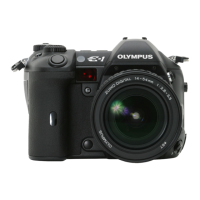86
Image, image quality and color
6
White balance
Color temperature
The spectral balance of different white light sources is rated numerically by color temperature—a
concept of physics, expressed using the Kelvin (K) temperature scale. The higher the color
temperature, the richer the light in bluish tones and the poorer in reddish; the lower the color
temperature, the richer the light in reddish tones and the poorer in bluish.
It follows, then, that the color temperatures of fluorescent lights make them unsuitable as artificial
light sources. There are gaps in the hues from the color temperatures of fluorescent light. If these
differences in hue are small, they can be calculated with color temperature and this is called
correlated color temperature.
The 4000K, 4500K and 6600K preset settings in this camera are correlated color temperatures,
and should not be considered strictly as color temperatures. Use these settings for shooting
conditions under fluorescent lights.
Note
● The color temperatures for each light source indicated in the above scale are approximate.
They are not an accurate indication of color. For example, the actual sunlight is not exactly
5300K, nor fluorescent lights 4000K.
TIPS
White balance with a flash:
T Auto WB is recommended when taking pictures with the flash. If you intend to use preset
WB, select the color temperature 6000K.
When shooting with the flash, be sure to play back your pictures and check the color on the
screen. Various conditions affect color temperature and how color is reproduced on the
screen.

